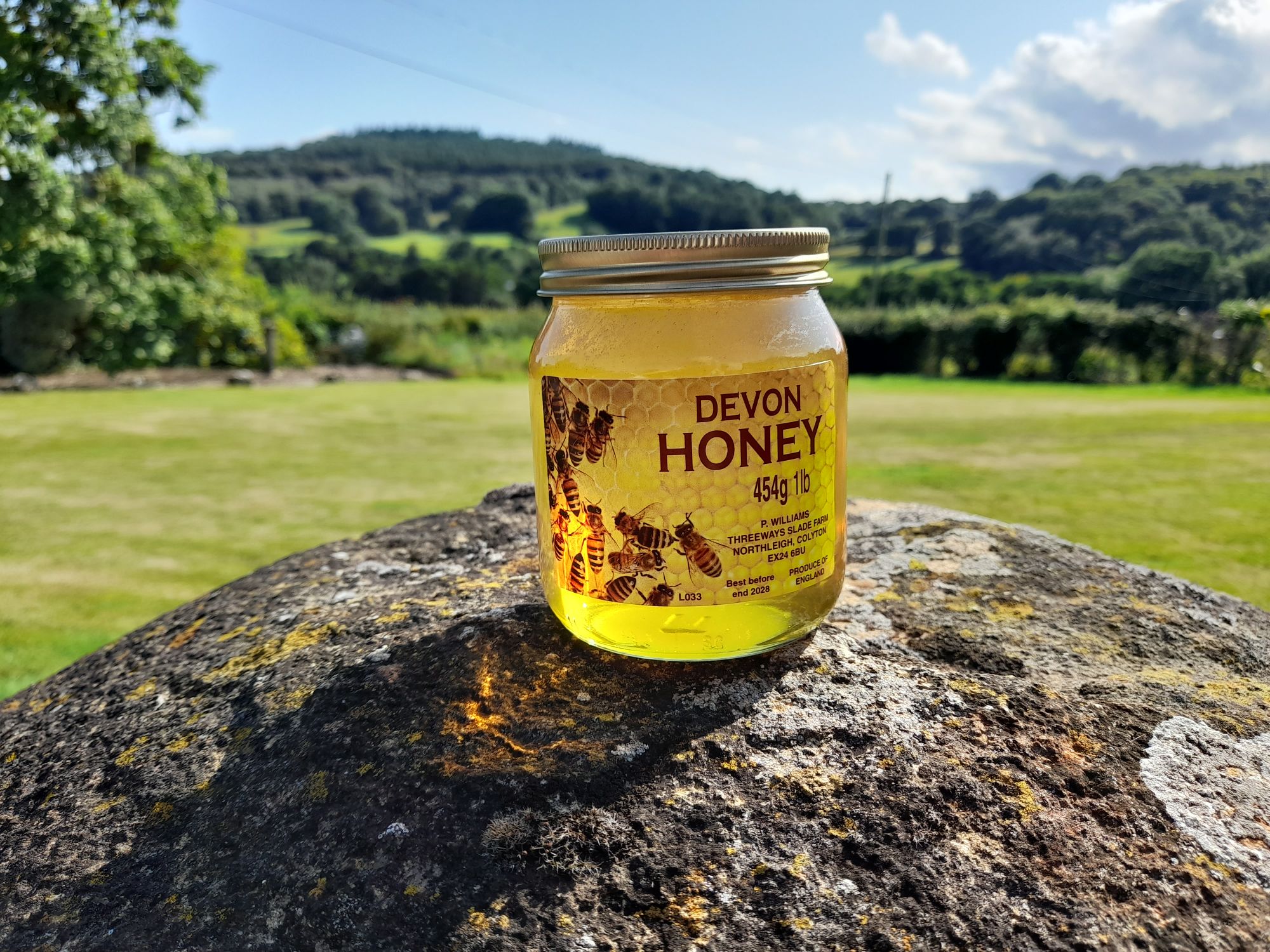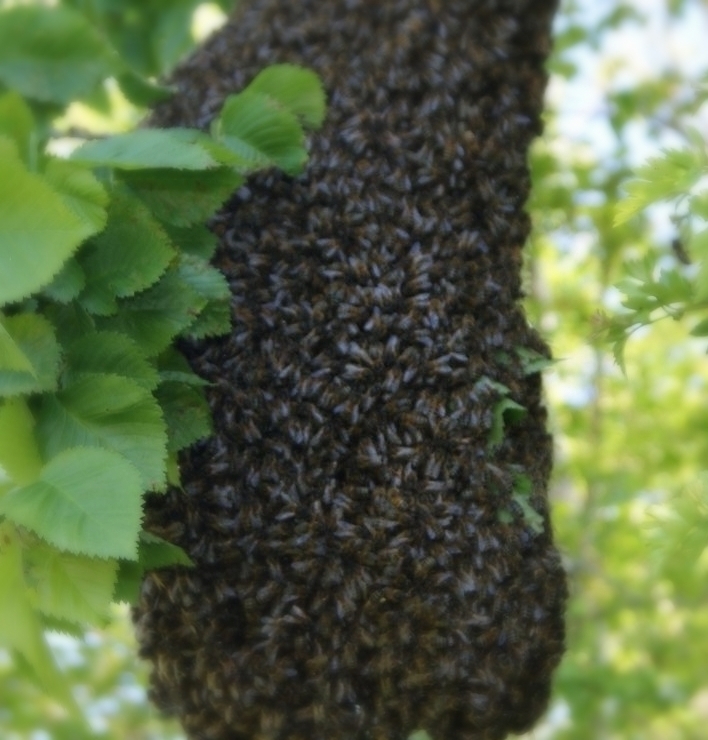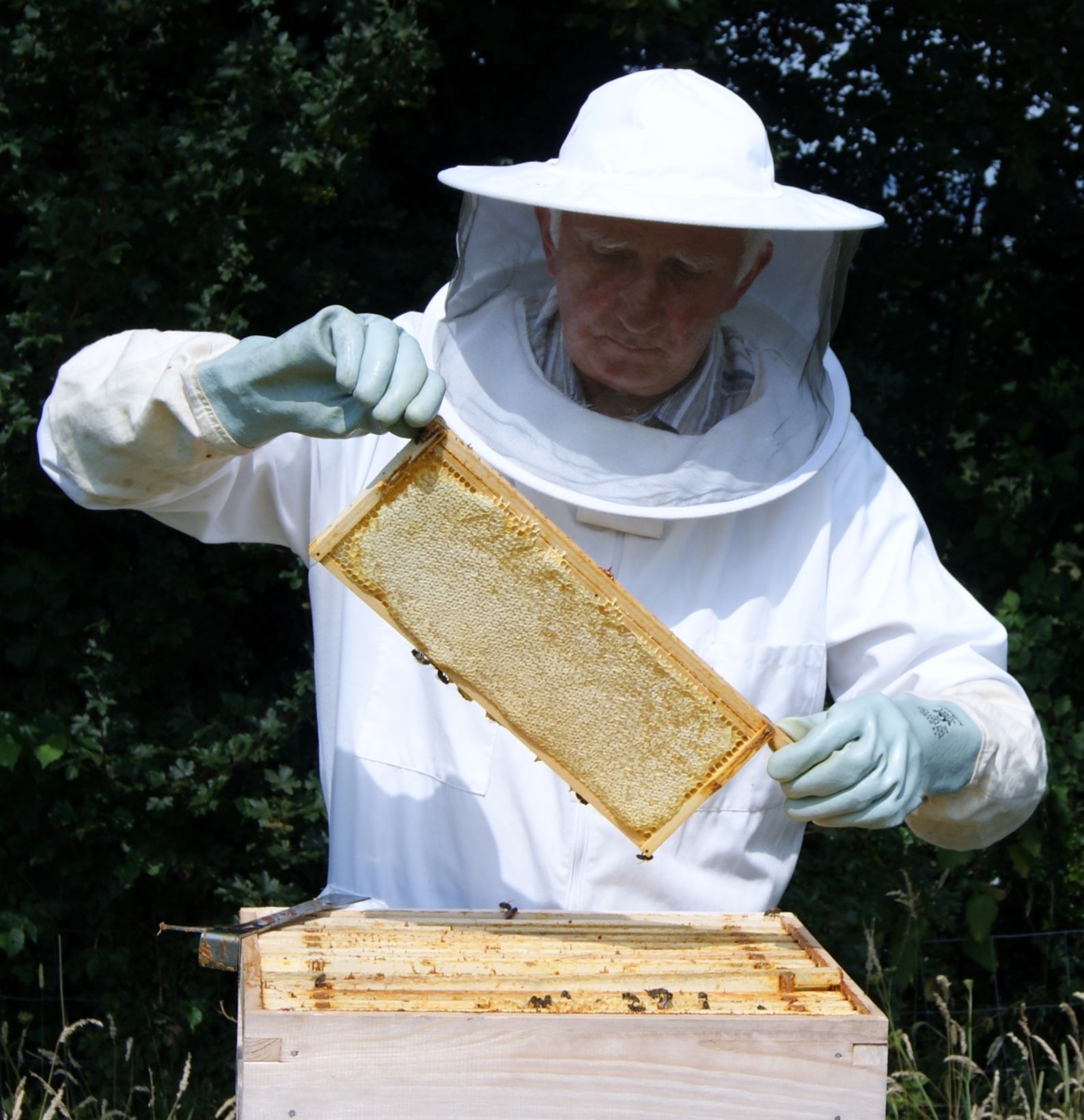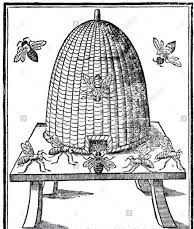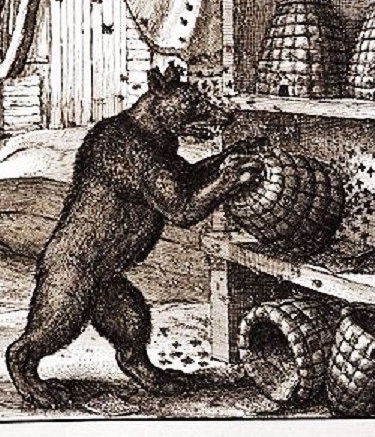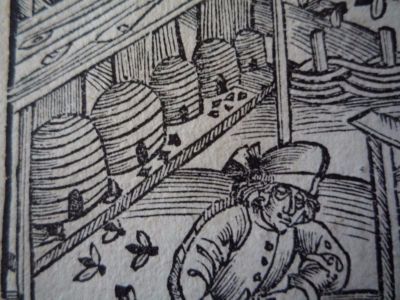Bees

" If the bee disappears from the surface of the earth, man would have no more than 4 years to live."
These very wise words were attributed to Albert Einstein and in todays world diseases amongst our bees are a very real threat. We thought it only right therefore that we should do our bit. So, a few years ago, we purchased our first colony of bees. To be honest our decision wasn't really based on Einstein's comments, more a fact that we really like honey.
Last year (2024) in spite of the very wet weather , the bees did us proud and gave us some really beautifully tasting honey. What we don't eat ourselves we sell at our roadside sales point.
Some may think it strange that bee keepers enjoy delving into a hive containing around 40,000 to 50,000 bees. There is obviously a reason. It's to ensure they are all fit and healthy, are not suffering from disease, mice haven't made their way into the hive or woodpeckers drilled their way in and wasps haven't raided the stores.
Few realise what a remarkable insect the bee is. Bees polinate three quarters of the world's crops and is the only insect that polinates the food we eat. They only have a life span of 122 - 152 days. Worker bees are female and only live for about 70 days. The male bees (Drones) are larger than worker bees but apart from mating with the Queen bee, don't do any work. The Queen bee lives for about 5 years and in summer lays up to 2500 eggs a day.
Whilst out foraging a bee can fly up to 4 miles at a speed of about 15mph and will only make 1/12 of a teaspoon of honey in its lifetime.

,There is evidence of bees being around in Egypt in approximately 2,500BC. Both the Egyptians and the Greeks used the honey both as food and medicine with the Greek god Zeus regarding it as 'food for the gods'. Similarly they regarded nectar (we now call it mead) as the 'drink of the gods'. It was Hippocrates, born in 460BC, regarded as the 'father of medicine' who praised the health giving properties of honey.
The picture on the left shows an ancient cave drawing dating back 8,000 - 10,000 years in Cuevas de la Arana in Valencia, Spain. Collection was by way of climbing rope ladders.
Thankfully collection is a bit easier today. Picture on right shows a jar of our honey.
